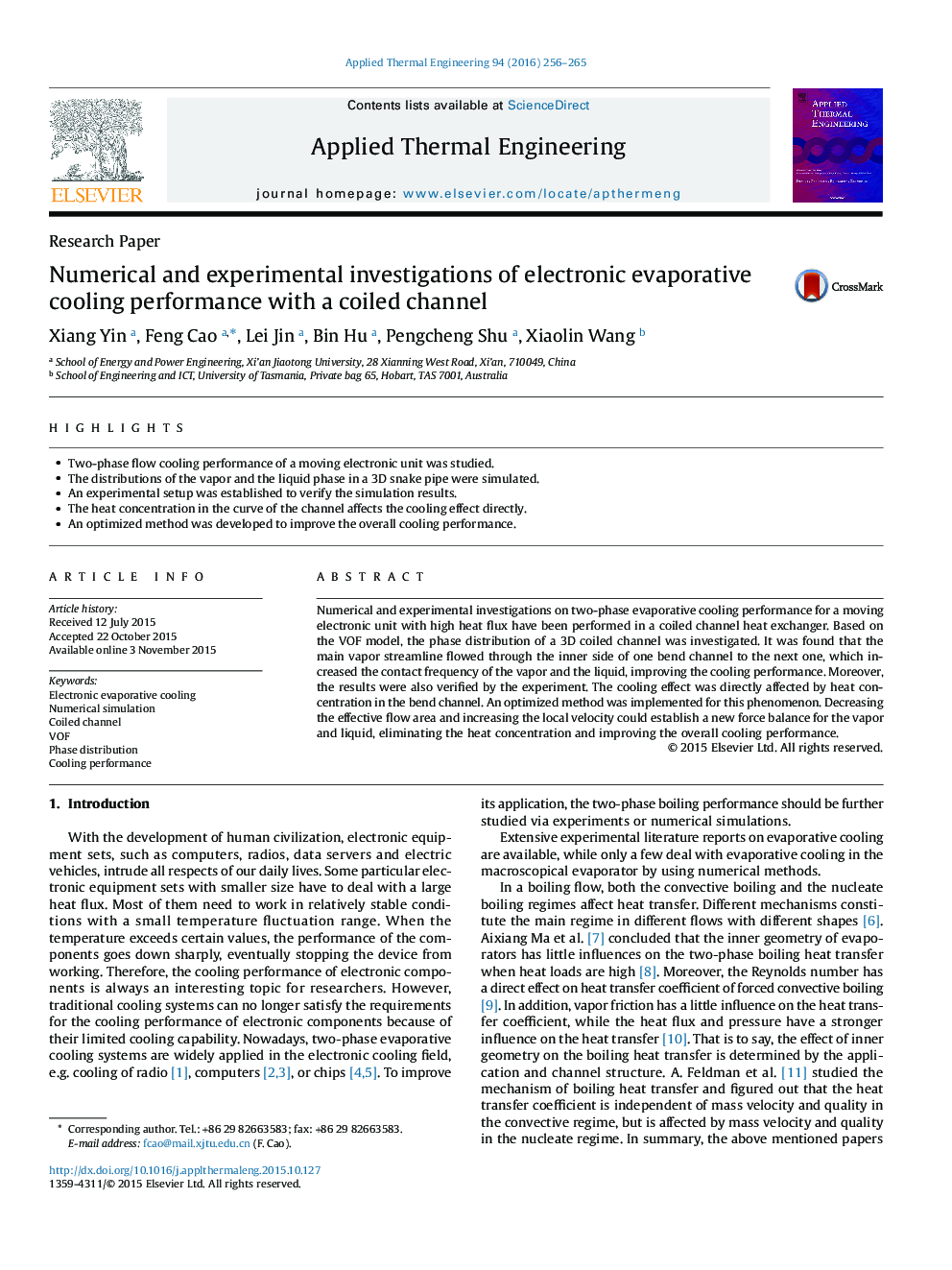| Article ID | Journal | Published Year | Pages | File Type |
|---|---|---|---|---|
| 644781 | Applied Thermal Engineering | 2016 | 10 Pages |
•Two-phase flow cooling performance of a moving electronic unit was studied.•The distributions of the vapor and the liquid phase in a 3D snake pipe were simulated.•An experimental setup was established to verify the simulation results.•The heat concentration in the curve of the channel affects the cooling effect directly.•An optimized method was developed to improve the overall cooling performance.
Numerical and experimental investigations on two-phase evaporative cooling performance for a moving electronic unit with high heat flux have been performed in a coiled channel heat exchanger. Based on the VOF model, the phase distribution of a 3D coiled channel was investigated. It was found that the main vapor streamline flowed through the inner side of one bend channel to the next one, which increased the contact frequency of the vapor and the liquid, improving the cooling performance. Moreover, the results were also verified by the experiment. The cooling effect was directly affected by heat concentration in the bend channel. An optimized method was implemented for this phenomenon. Decreasing the effective flow area and increasing the local velocity could establish a new force balance for the vapor and liquid, eliminating the heat concentration and improving the overall cooling performance.
